This issue covers the proceedings of the Central Alaska Park Science Symposium, held in Denali National Park. Topics include climate change monitoring, landscape and wildlife ecology, physical sciences, fisheries, subsistence, and using science as a tool for park management.
-
Denali National Park & Preserve
Article 1: Long-Term Air Quality Monitoring in Denali National Park

Air quality monitoring in Denali has been ongoing for over three decades. With global pollution projected to increase over time, Denali’s clean air is dependent upon international as well as national efforts to limit emission increases. As a prominent wilderness tourist destination, the park may help inspire global citizens to protect clean air partly because it is an integral part of Denali’s intact ecosystem. Read more
-
Article 2: Monitoring Seasonal and Long-term Climate Changes and Extremes in the Central Alaska Network
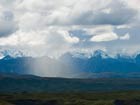
Climate is a primary driver of ecological change and an important component of the Central Alaska Inventory and Monitoring Network (CAKN). By monitoring seasonal and long-term climate patterns in the region, we can correlate climate changes and extremes to other variations in the ecosystem, such as changes in permafrost extent or vegetation composition. Read more
-
Denali National Park & Preserve
Article 3: A Baseline Study of Permafrost in Denali's Toklat Basin
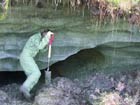
Learn about a 2003 baseline study of 160,000 acres in the Toklat River basin of Denali. Permafrost was known to exist in the area, but this study provided specific details which will benefit park managers and future scientists. Read more
-
Denali National Park & Preserve
Article 4: Dinosauria and Fossil Aves Footprints from Denali's Lower Cantwell Formation
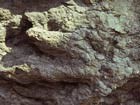
Denali's Cantwell Formation contains the first record of dinosaurs in the Alaska Range. This record consists of tracks of small, medium, large, and very large-sized theropods, as well as hadrosaurs. Read more
-
Denali National Park & Preserve
Article 5: Interpreting Denali's Landcover Types with Fabric

Combining art and science, Denali Quilters created a quilt (approximately 3.3 meters square) to interpret Denali National Park and Preserve’s landcover types. The central map is a satellite image of 23 land-cover types (13,600 colored fabric pixels). Twenty-two blocks surround the map, each depicting a close-up view of selected plants and animals found in a cover type. The machine quilting outlines the park’s boundary, highlights drainages and topographic lines, and depicts a Read more
-
Denali National Park & Preserve
Article 6: Grizzly Bear Population Ecology in Denali
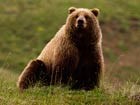
What have 25+ years of studying grizzly bears in Denali taught us? Read more
-
Article 7: Wolf Foraging and Related Social Variations in Denali National Park
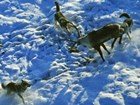
Extensive studies suggest that wolf behavior varies greatly based on prey diversity, and in the process certain wolf groups express greater social and other non-migratory adaptations. Read more
-
Denali National Park & Preserve
Article 8: Dynamics of Small Mammal Populations in the Rock Creek Watershed of Denali
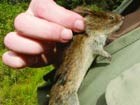
Through a 14 year mark-recapture study, scientists tracked the population dynamics of voles in a watershed near Denali's entrance. In the process, they discovered the date of spring onset most-notably influences their populations. Among other reasons, voles are an important species because their abundance influences carnivore populations higher up the food chain. Read more
-
Denali National Park & Preserve
Article 9: An Integrated Study of Road Capacity at Denali
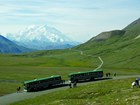
A sole road provides access to the interior of Denali. Traffic on it is restricted mostly to buses, with a cap on how many total trips can occur in a summer. Though the limit hasn't been reached, visitation increases annually. In order to evaluate the traffic limits and how traffic impacts wildlife, we have designed a multidisciplilnary study. This research will inform decisions about managing traffic to protect resources and maintain quality visitor experiences. Read more
